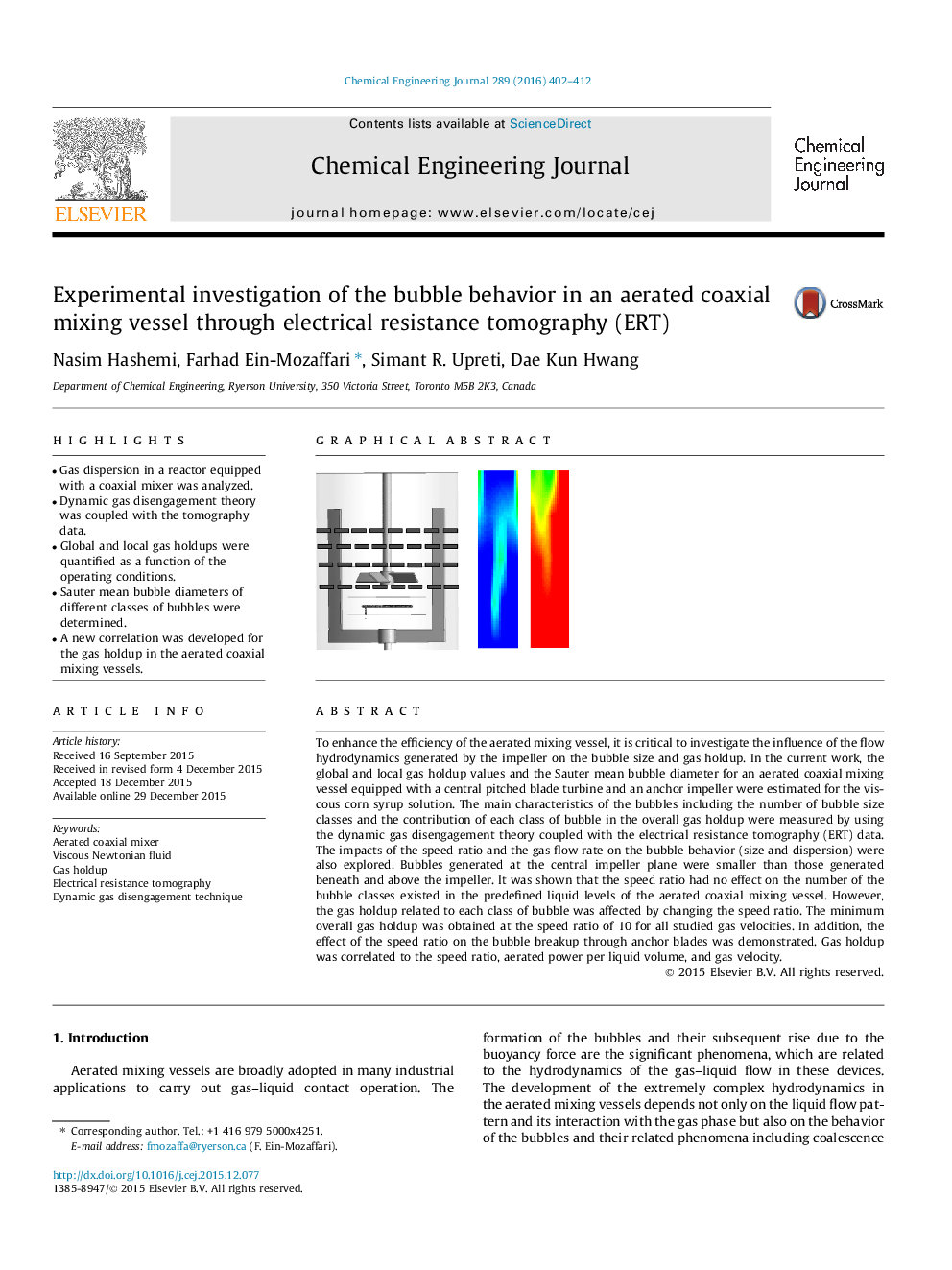| کد مقاله | کد نشریه | سال انتشار | مقاله انگلیسی | نسخه تمام متن |
|---|---|---|---|---|
| 145830 | 456352 | 2016 | 11 صفحه PDF | دانلود رایگان |

• Gas dispersion in a reactor equipped with a coaxial mixer was analyzed.
• Dynamic gas disengagement theory was coupled with the tomography data.
• Global and local gas holdups were quantified as a function of the operating conditions.
• Sauter mean bubble diameters of different classes of bubbles were determined.
• A new correlation was developed for the gas holdup in the aerated coaxial mixing vessels.
To enhance the efficiency of the aerated mixing vessel, it is critical to investigate the influence of the flow hydrodynamics generated by the impeller on the bubble size and gas holdup. In the current work, the global and local gas holdup values and the Sauter mean bubble diameter for an aerated coaxial mixing vessel equipped with a central pitched blade turbine and an anchor impeller were estimated for the viscous corn syrup solution. The main characteristics of the bubbles including the number of bubble size classes and the contribution of each class of bubble in the overall gas holdup were measured by using the dynamic gas disengagement theory coupled with the electrical resistance tomography (ERT) data. The impacts of the speed ratio and the gas flow rate on the bubble behavior (size and dispersion) were also explored. Bubbles generated at the central impeller plane were smaller than those generated beneath and above the impeller. It was shown that the speed ratio had no effect on the number of the bubble classes existed in the predefined liquid levels of the aerated coaxial mixing vessel. However, the gas holdup related to each class of bubble was affected by changing the speed ratio. The minimum overall gas holdup was obtained at the speed ratio of 10 for all studied gas velocities. In addition, the effect of the speed ratio on the bubble breakup through anchor blades was demonstrated. Gas holdup was correlated to the speed ratio, aerated power per liquid volume, and gas velocity.
Figure optionsDownload as PowerPoint slide
Journal: Chemical Engineering Journal - Volume 289, 1 April 2016, Pages 402–412